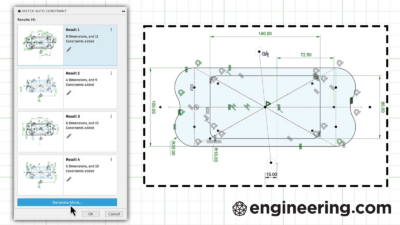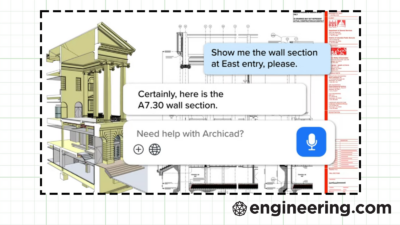Computational fluid dynamics simulate material flows to assess everything from aerodynamics to heat transfer.
Computational fluid dynamics, or CFD, is a process that incorporates physics-based models and numerical methods to simulate material flows. Most CFD computer-aided engineering (CAE) simulations are governed by the Navier–Stokes equations. Colloquially, the term CFD can also denote a specific fluid-based simulation, result or software.

CFD simulations have various engineering applications. External CFD models are frequently used to supplement, inform or replace physical wind tunnel and aerodynamic testing in the aerospace and automotive sectors. Internal CFD simulations are also used by these industries to help design and optimize the fuel flows, exhaust fumes or internal combustions associated with a vehicle’s engine. CFD simulations can also model mixing, heat transfer, chemical reactions and any other phenomena that include the flow of gases and/or liquids.
How to do CFD?
CFD analysis is typically done using 3D multiphysics software. Leading commercial suppliers include Ansys, Altair, Siemens Digital Industries Software, Dassault Systèmes, Autodesk, PTC, COMSOL and Hexagon. However, popular open source CFD software options also exist; OpenFOAM is one of the most prominent.
The first step to complete a 3D CFD simulation is to input the test geometry from computer-aided design (CAD) software. Tools within the simulation software, or third-party options, pre-process the geometry by filling in unintended gaps and simplifying complex shapes that will increase computations without affecting results. A flow field is then selected to be either internal to the geometry, or external. When an external flow field is selected, the user must also denote how far from the input geometry the fluid flow will be calculated. Initial conditions, flow models and materials properties are then input into the software.
Engineers using CFD simulations must pay close attention to the flow models selected, particularly when dealing with turbulent flows. This is because different turbulent models may be better suited to various applications, geometries, fluids, flow volumes, scales and internal/external flow fields.
The geometry is then typically meshed into smaller discrete cells to break the problem down into smaller parts—as is typically done with other numerical-methods‒based 3D simulations. In these smaller, well-defined regions it is easier to assign and solve the governing equations of the simulation.
These inputs are then passed onto a computer algorithm, often called the CFD solver, to iterate the computations until their results converge to an answer. Tools within the simulation software, or external third-party options, are then used to post-process the results into flow diagrams, charts, geometries and reports.
Why are CFD simulations important to engineering?
CFD simulations were traditionally done at the end of a product’s development as one of many means to verify designs. However, CFD is being used increasingly often throughout a product’s lifecycle.
CFD simulations can be performed early in development to test the feasibility of a design. Engineers can then use CFD simulations to iterate on these designs, explore the design space or optimize a product to a particular configuration.
CFD simulations are also being used after product development to optimize user experiences. For example, a manufacturing plant might use a simplified CFD simulation as a part of a digital twin. Sensors, from within a real-world asset, can sample processes on the production line. CFD simulations can then use those readings as inputs to assess the health of assets, improve performance, predict maintenance issues or inform the original design team of unexpected use cases and environments. At this point the CFD simulation, with the help of the sensor data, becomes a digital twin of the physical asset.



